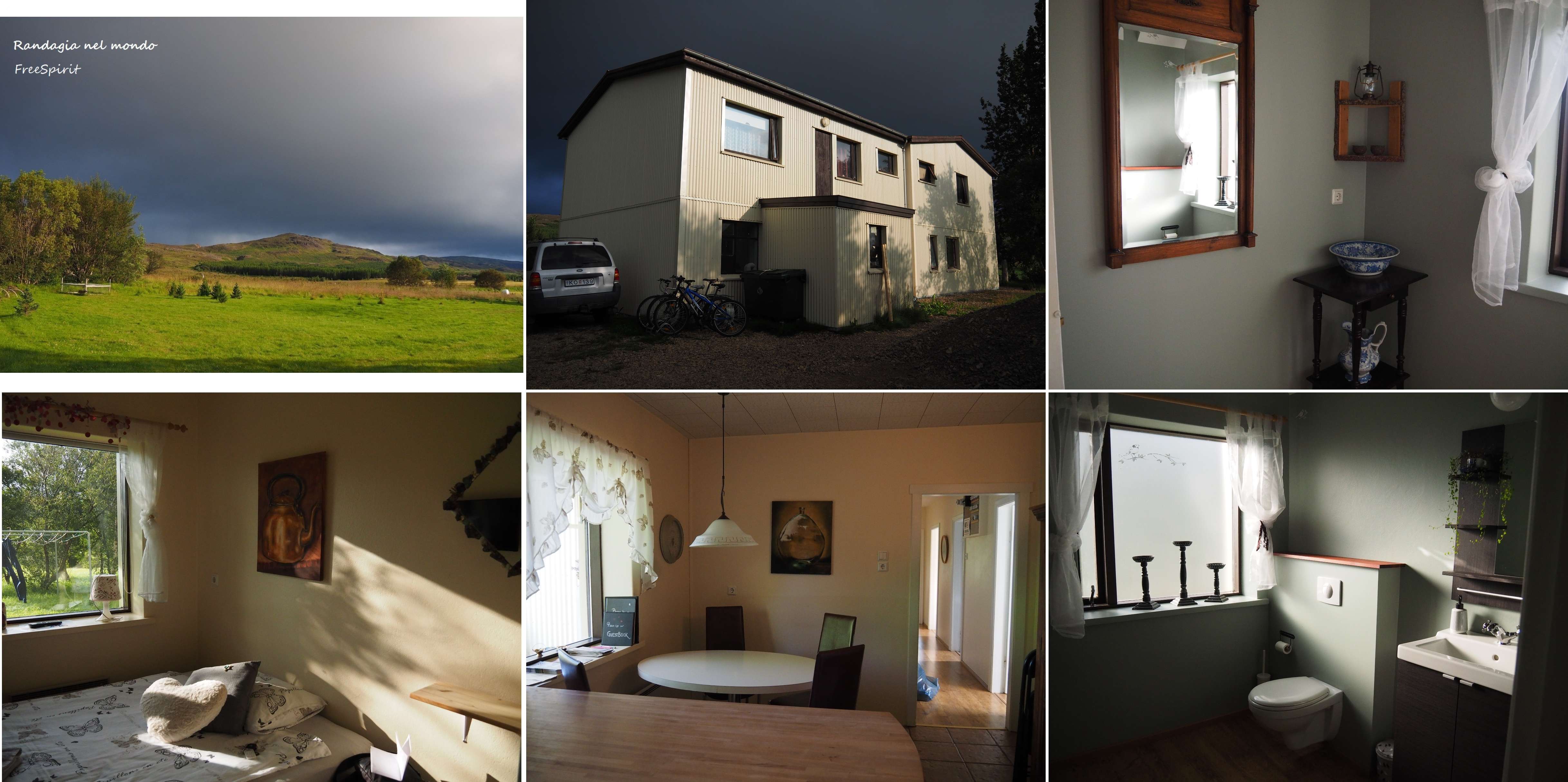Although the plane landed on time, we spend some time at the airport collecting money from ATMs, and find a little bit of a queue at the car rental agency, which we reach with a shuttle (it is not however distant, and with light luggage can be reached by walking in 5 minutes, on the way back we did so). To tell the truth, it takes quite a long time to me to control the state of use of the car which was assigned to me, first I take several photos, then I call the car rental employee to check some scratches, which I ask to add to the delivery document. In any case, it is better to be picky in the beginning, in my opinion, to avoid discussions at the return. At least another three quarters of an hour are dedicated to our first Icelandic shopping, with a stop at a series of shopping centers on the Reykjiavik ring road. Bonus is unfortunately already closed (normally they close at 18), so we adapte to Kronor. We have already brought a discrete amount of food from home, but in any case we waste a lot of time identifying everything that is cheaper ….
On the way to Skalhòlt, we stop to visit the Þingvellir National Park, a clearing where, in 930, Alþingi, the Icelandic parliament, was founded. It is one of the first in the world to be established. It is possible in this area to walk between two parallel gorges, it is in fact a fracture (the Almannagjà) which was formed as a result of the removal of the faults following telluric moments. The assembly met outdoors once a year to legislate and make important decisions for the country. After visiting the Holmavik museum, I will learn that trials for people accused of witchcraft were also held here. Due to the late hour, there is practically nobody there.
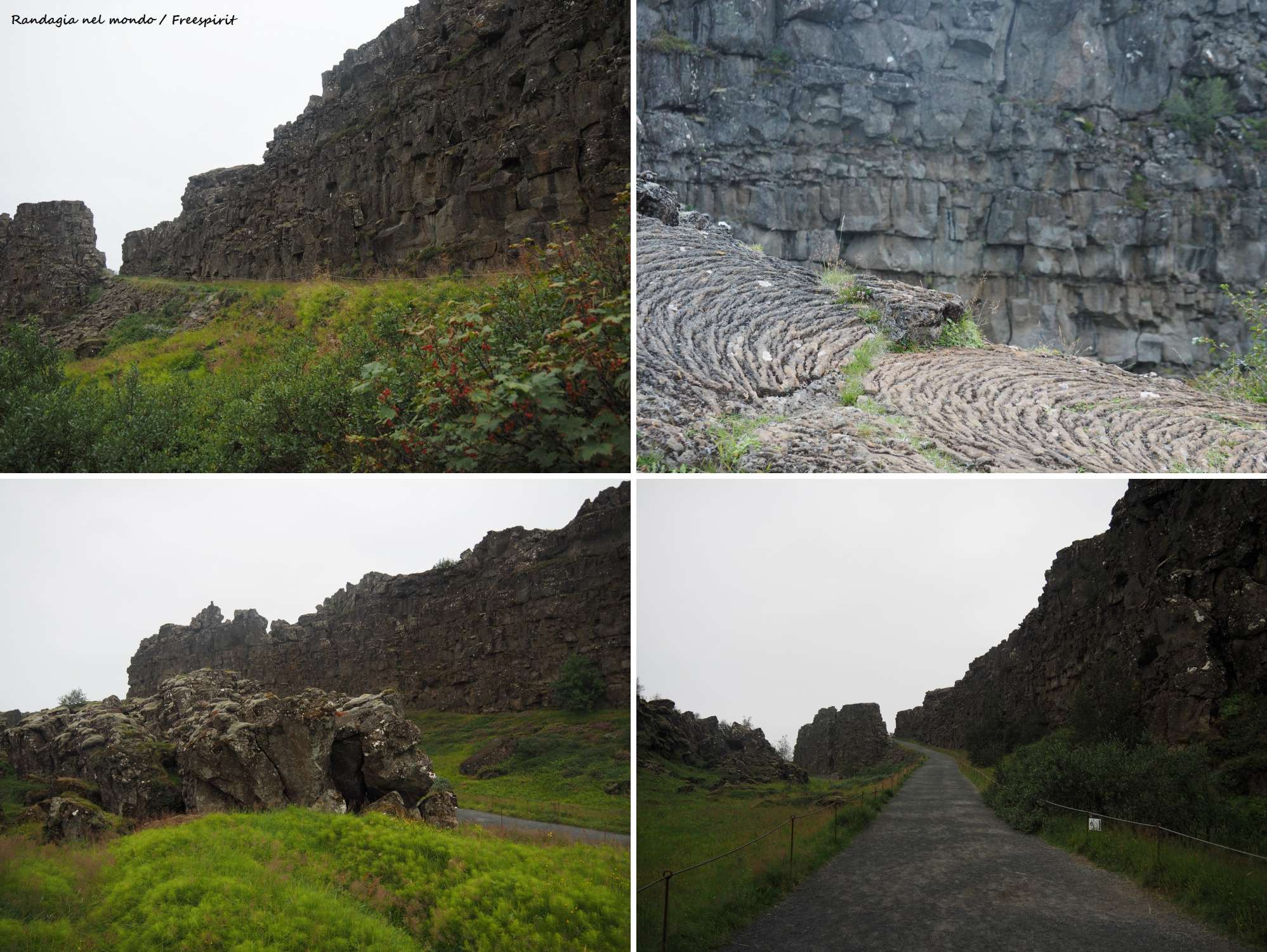
We reach Skàlholt effortlessly thanks to Google Maps around 8 pm. What is hard is to identify the exact place where we have to sleep. After a bit of vicissitudes, and phone calls to our host, we finally manage to settle down in a sort of house with several bedrooms, and a common kitchen and bathroom, but it’s just us, and therefore we feel like queens in a castle.
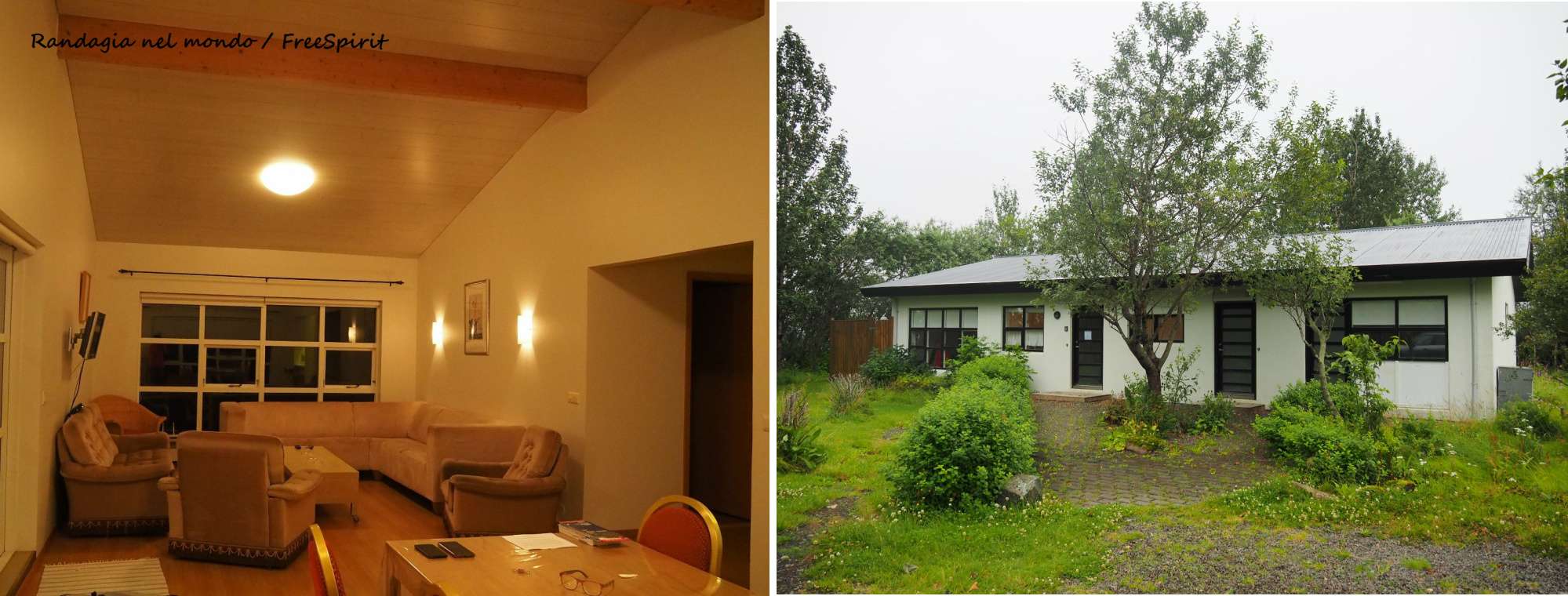
Skàlholt is an important religious center, seat of the episcopal curia. In addition to our house there is a beautiful guesthouse, which I think can be booked by Booking, much more expensive, though. We scoure it the following morning, before departure, also because we have to pay for our two singles (35 Eu, nothing had been requested at the time of booking, via email, not even credit card number)

The cathedral was destroyed during an earthquake, a small church with turf roofs remains. We photograph it before leaving Skàlholt.
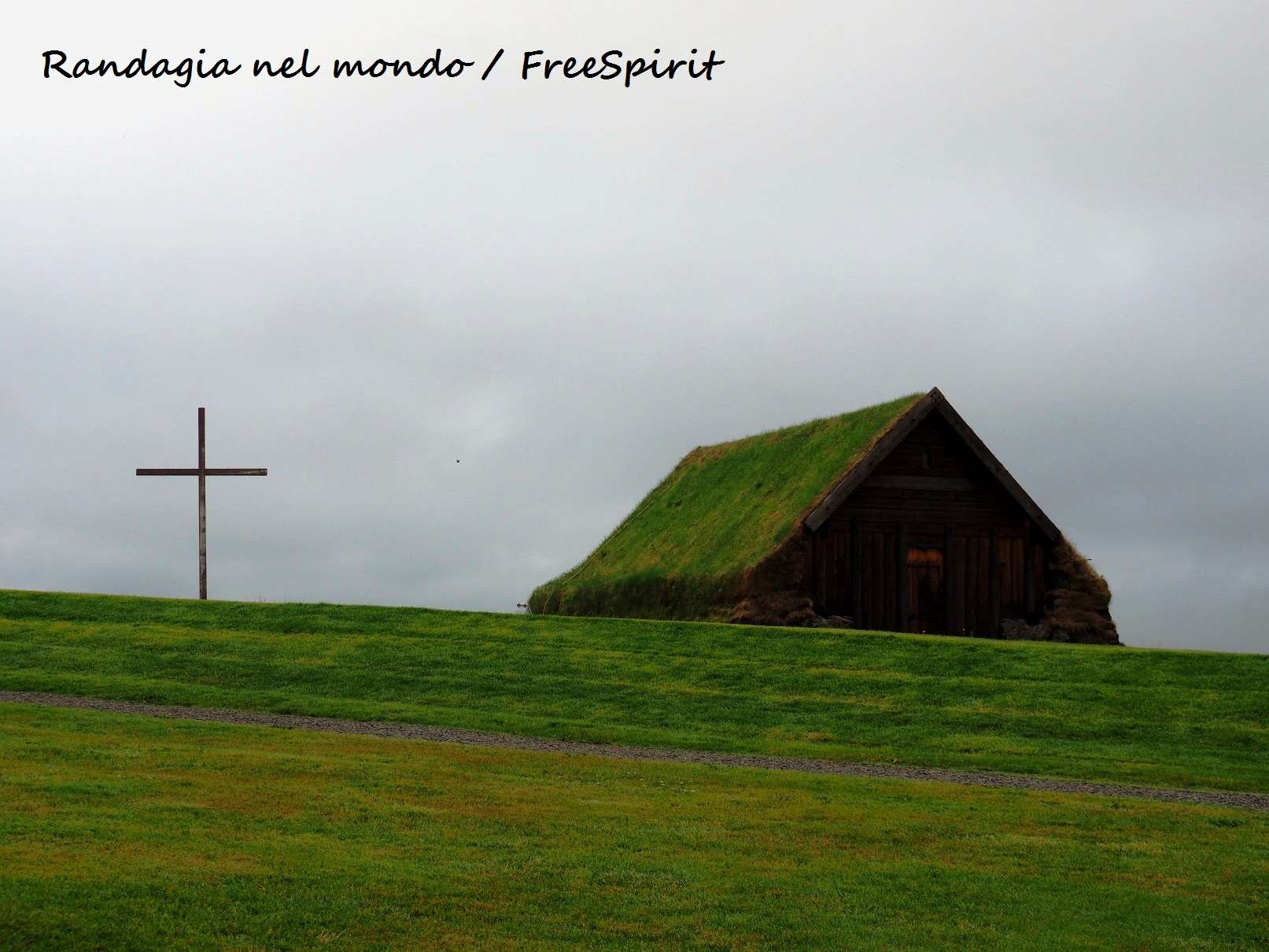
and then we leave for the Haukadalur valley, to admire its numerous geysers, among which the most famous one is Geysir, the oldest historically known, which has therefore extended its name to all the phenomena of this type. Admission to the site is free. It is already packed with people at 10 am. The Geysir in the present days has exhausted the power of the past, so the new star is nowadays Strokkur, which erupts about every 20 minutes. It is possible to walk in the surroundings, admiring sulfate and boiling pools.
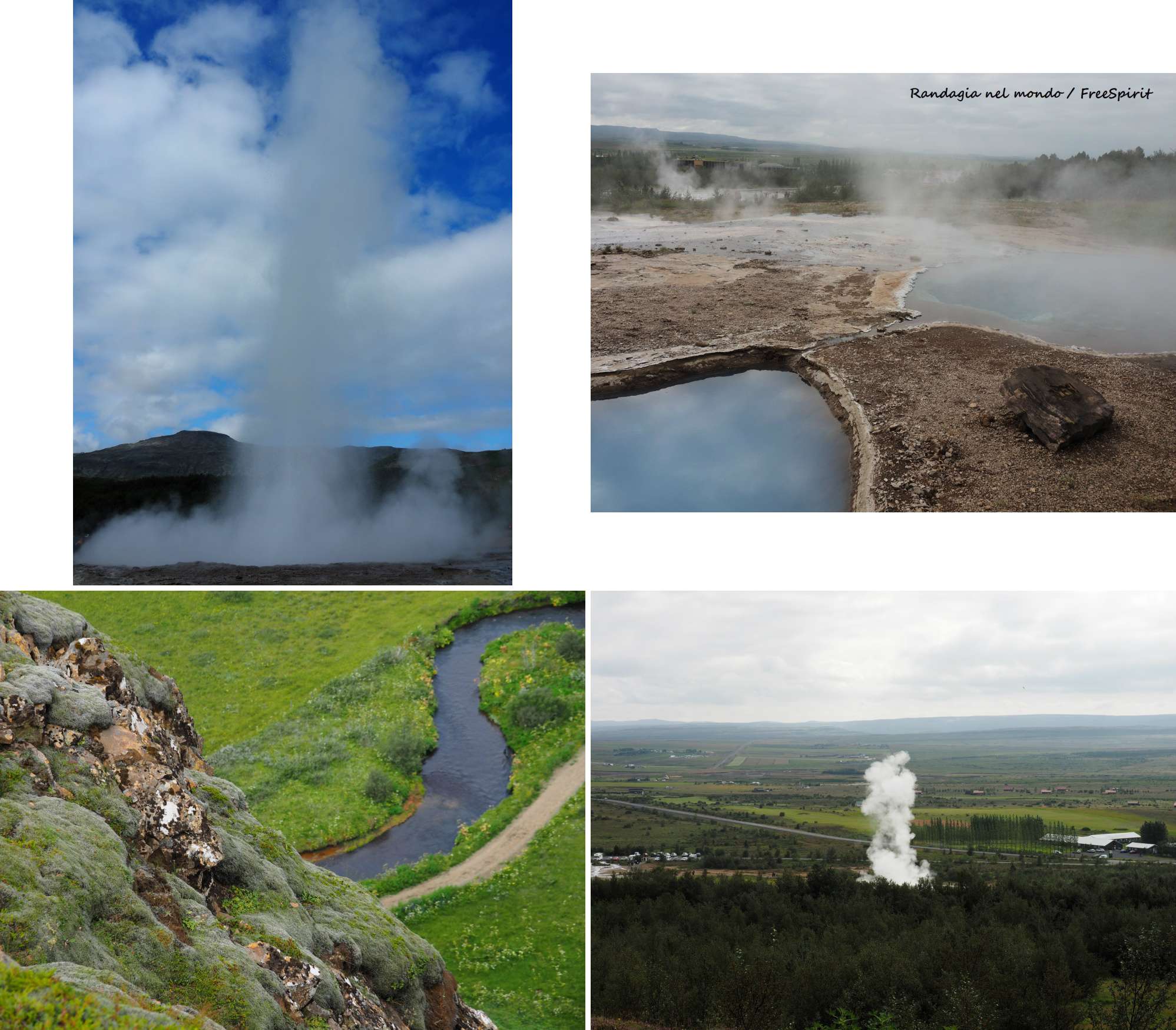
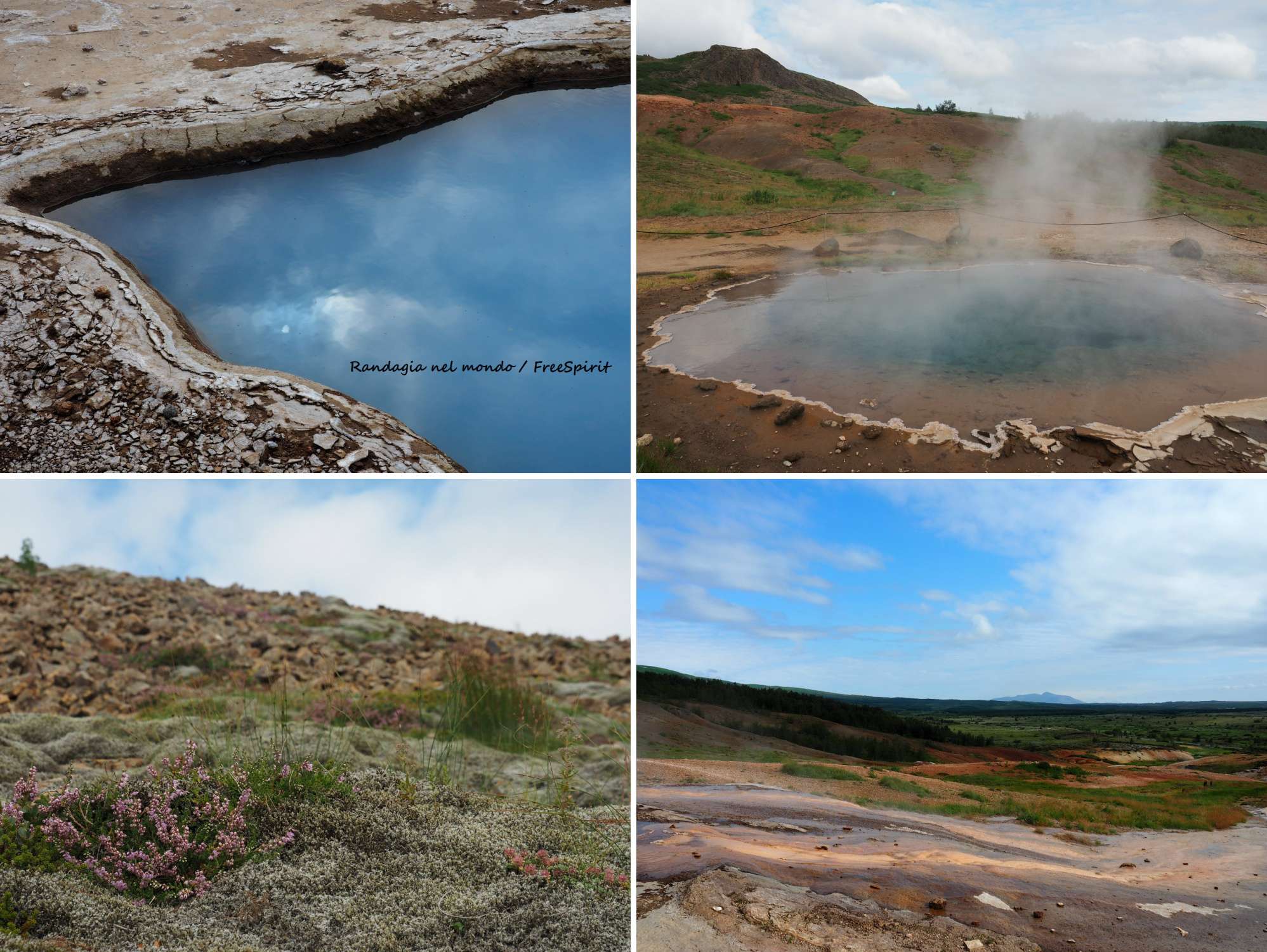
The shopping center next to the parking lot is well-stocked not only with souvenirs, but also with high-quality clothing, (technical and for normal use), and houses bars and restaurants stormed by tourists. We decide to continue towards the Gullfoss waterfalls, which are also very crowded on the main viewpoint, even if, I realize with pleasure, my tripod inspires some awe, so at least 80% percent of present people before standing right in front wait for me to finish my operations with the camera autoshot button. It is not the same, however, alas, when I put it in the trunk and shoot freehand. Moving away from the parking lot, however, the human gathering decreases a lot, and it is possible to walk on a ridge, admiring the falls on the other, almost without the presence of humans.
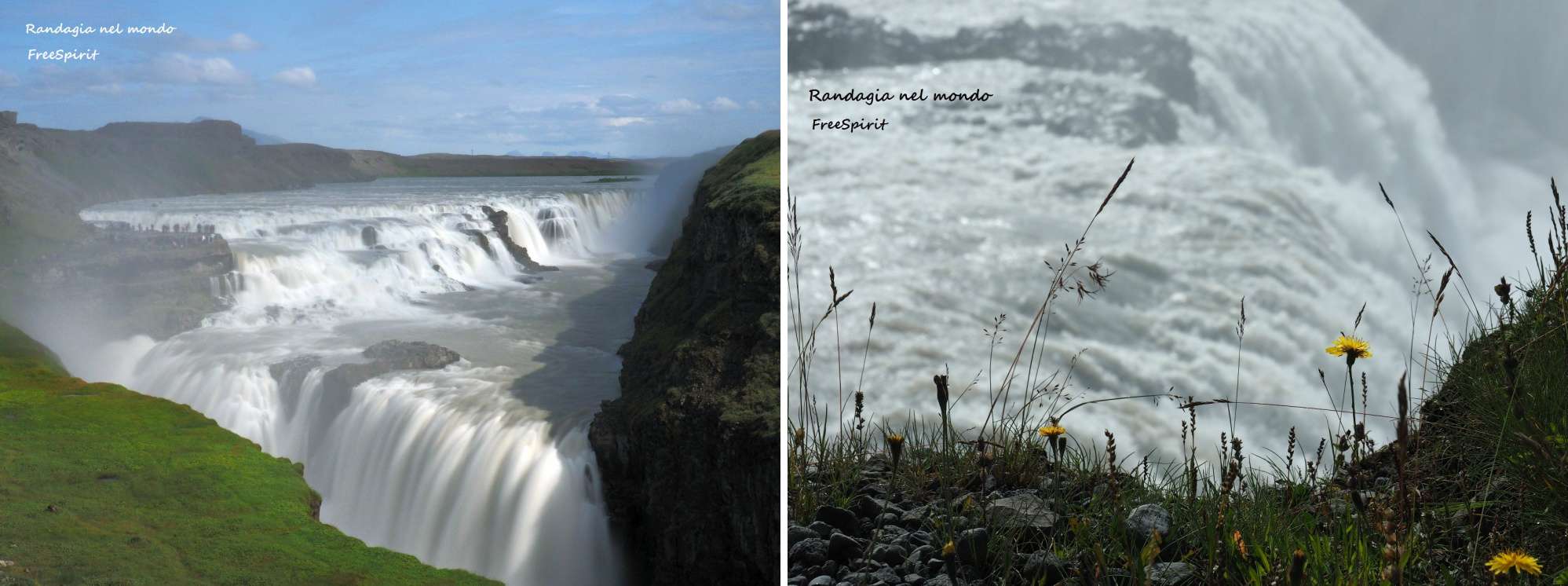
As a rest area for our picnics we choose the entrance lawn of a lovely campsite, which borders a farm where numerous horses graze
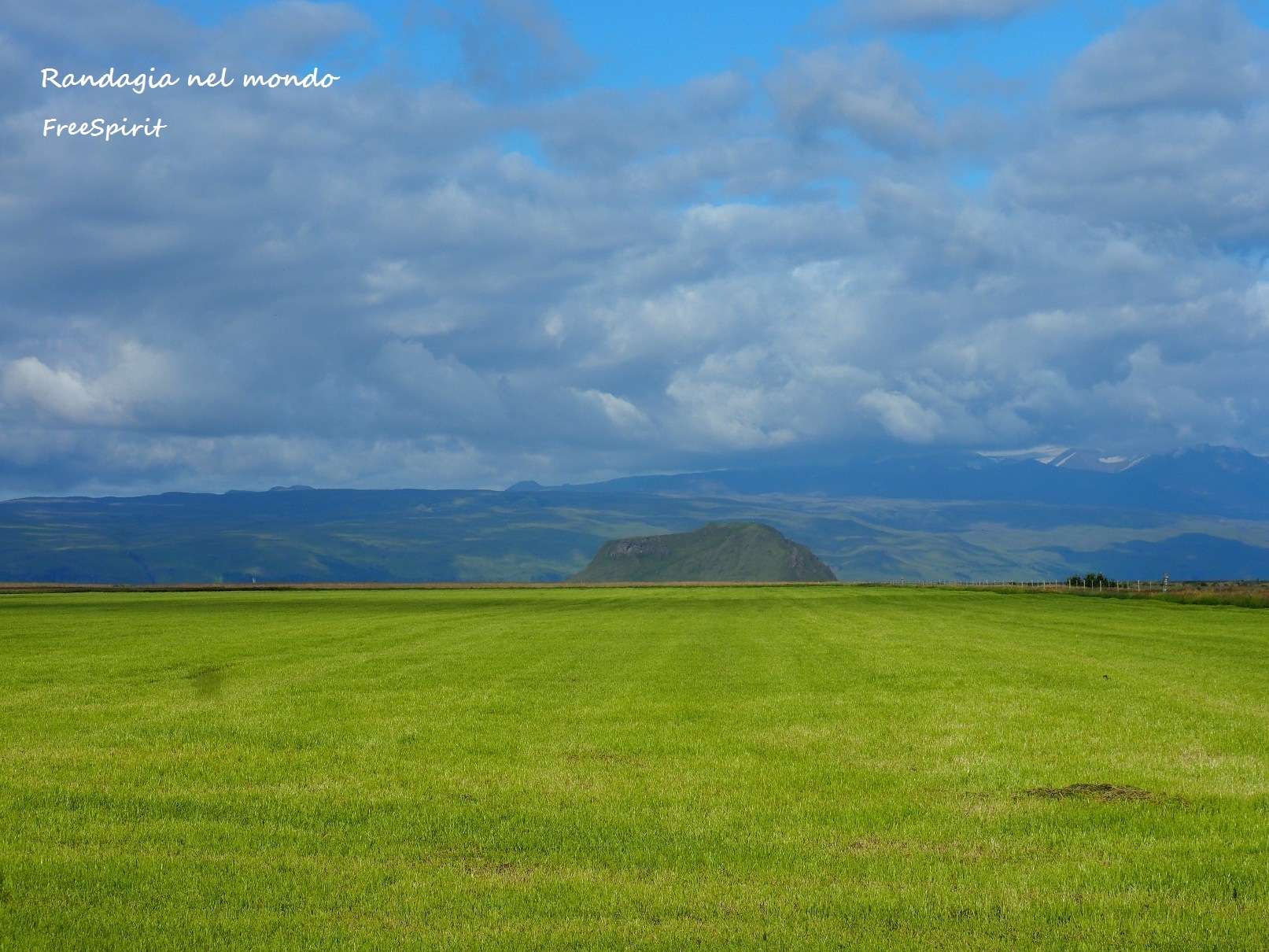
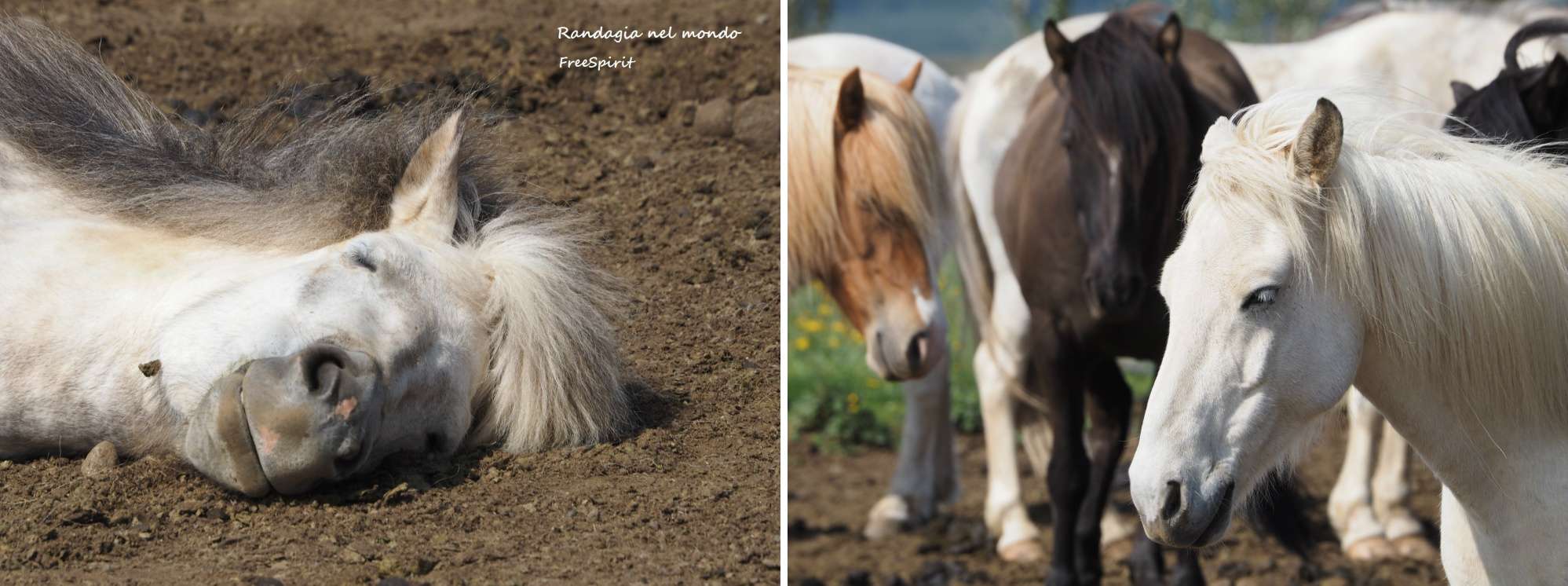
After our packed lunch, (we prepared it in the morning before leaving), following the tourist flow we stop at Seljalandsfoss, the famous waterfall behind which it is possible to walk (the nylon cape is mandatory if you do not want to get wet). They say that this waterfall is particularly spectacular at sunset, unfortunately we get there at around 3 pm, and in the meantime the sun has hidden behind an expanse of clouds, so my photos are not that great. On the other hand, the view is remarkable, walking towards other adjacent waterfalls.
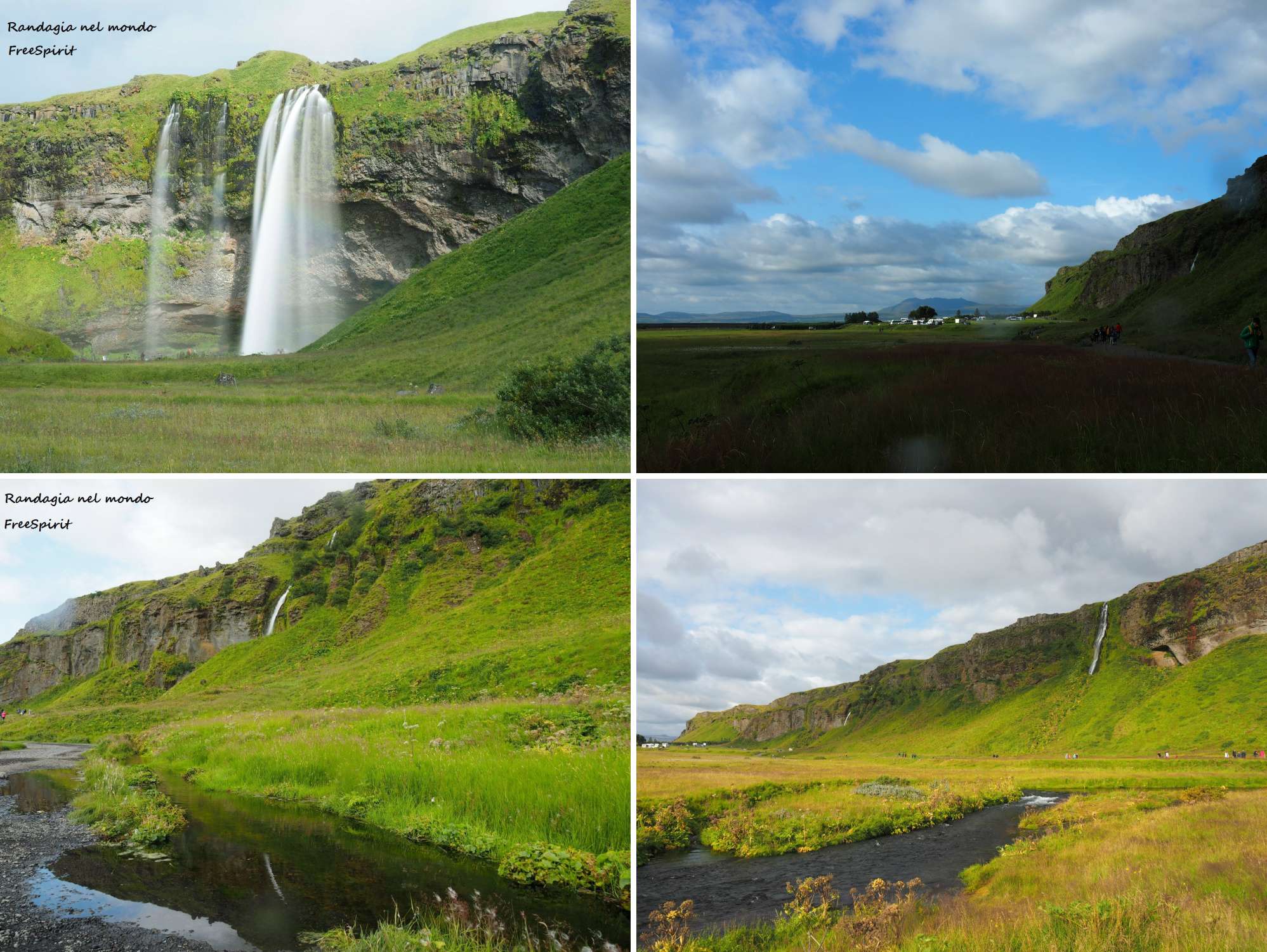
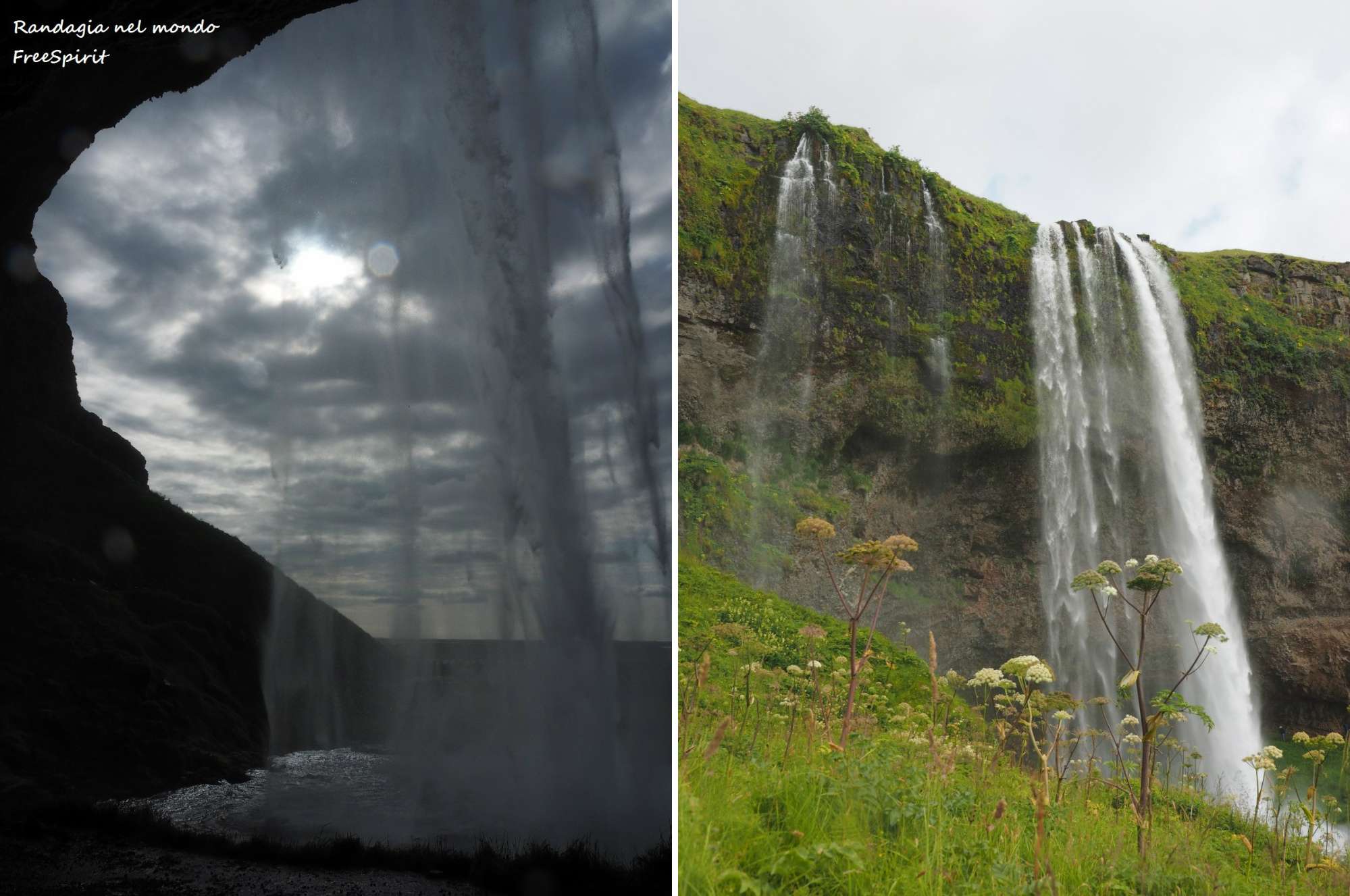
Later, when the sun has finally disappeared behind a thick blanket of clouds, we arrive at Skògafoss. We walk the 700 steps to observe the waterfall from above, from here the Laugavegur path branches off. Our first day in this land is a continuous amazement in front of the majesty of the landscapes.

We sleep at Eystrisolheimar, a farm 22 km from Vik, in two singles. I requested the cheaper sleeping bag accommodation (30 Eu) so I don’t have towels available, and no blankets and sheets on beds either. To tell the truth, the mattresses are, however, covered by something which looks like a sheet, but I don’t know if it is clean. A French couple is eating microwave ready food, we cook a sumptuous saffron risotto instead. The hosts live in the apartment above. After dinner, at around 10 pm, I go out to walk around in the courtyard, to admire the low sun which is setting, and to make friends with some horses.

The following morning, we find the indications for the highly photographed plane wreck of a DC-3 in Sòlheimasandur, but we decide that the 6 km walk is a waste time, and we continue towards Sólheimajökull, our first glacier, It is possible, from the parking lot , reach the offshoots with a short and easy walk. Excursions with crampons are also organized. It is absolutely not recommended to venture without adequate equipment. Despite the gray sky, there are many photographic opportunities.


Then, it’s time for the Dyrhólaey promontory, from the cliffs overlooking the sea you can see a lava stone arch and some stacks, as well as, if you are lucky, several puffins.

We eat our packed lunch near the lighthouse, then we go to the black beach of Reynisfjara, surrounded by basaltic columns originated by lava flows. It’s very crowded. Tourists climb everywhere, like ants. The weather is inclement, with gray skies and whipping winds. Many are dressed inadequately, with spring clothes suitable for fashionable selfies; they are so busy in taking pictures that often they do not notice the coming of the waves, and are invested with them. Reynisfjara, with its strong undertow currents, is sadly known for the anomalous waves, which in some cases have overwhelmed inattentive tourists, taking them out in the sea where they drowned. I read an interesting theory on the web about it: it seems big waves come in groups of 3 or 4. The most impetuous is always the last one, which tricks you when maybe you think you are already safe after the first one and you get close to the water. Reynisdrangar is the name of the large large rocks that emerge from the sea in front of the beach. According to the Icelandic sagas, they are trolls who got petrified by sun light while trying to drag a ship to the shore. The largest cliff, infact, seen from some angles, looks like a vessel. In reality, however, Reynisdrangar were part of the Reynisfjall mountain, they detached themselves from it due to weather erosion

We dedicate a short visit to Vik, first to its large supermarket, with annexed shops, and then to its deserted and wild beach.
Before reaching our campsite, we pass under the rain through a very particular desolate wasteland, Skaftareldahraun, consisting of lava fields created in 1783, and covered with green moss. It is considered one of the largest lava flows in the world originating from a single eruption. A ring path delimited by ropes allows you to photograph the landscape. There are some caves in the area.

Finally we arrive to the Kirkjubæjarklaustur campsite, booked through Air BnB (182 Eu, sic!), Tonight we sleep together in a rather cramped two-bunk bedded bungalow, located however in a spectacular landscape. It rains both on arrival and during the night, the visit to the showers and toilets is not entirely easy, but I think about people in the tents, and I feel lucky 🙂
On the next morning, at wake up, the sun shines, and the landscape around is fabulous. Before arriving to our first stop of today, one of the most awaited, Fjaðrárgljúfur, we pass by the Systrastap rock. The visit to the Fjaðrárgljúfur disappoints me a little bit, because there are mandatory routes to follow strictly, and it is not possible to go around freely. After a videoclip was shot here shot by Justin Bieber, the area has been invaded by tourists from all over the world, who destroyed the environment. The canyon was later closed for maintenance, and the delimitation of the paths was decided to safeguard the landscape. Apart from this detail, the view from the lookouts is magnificent, especially when, towards late morning, the sun peeks out.

A little further on, right on the ring road, we reach this pleasant location whose name I could not find, Maps simply calls it Foss, but only geolocation:
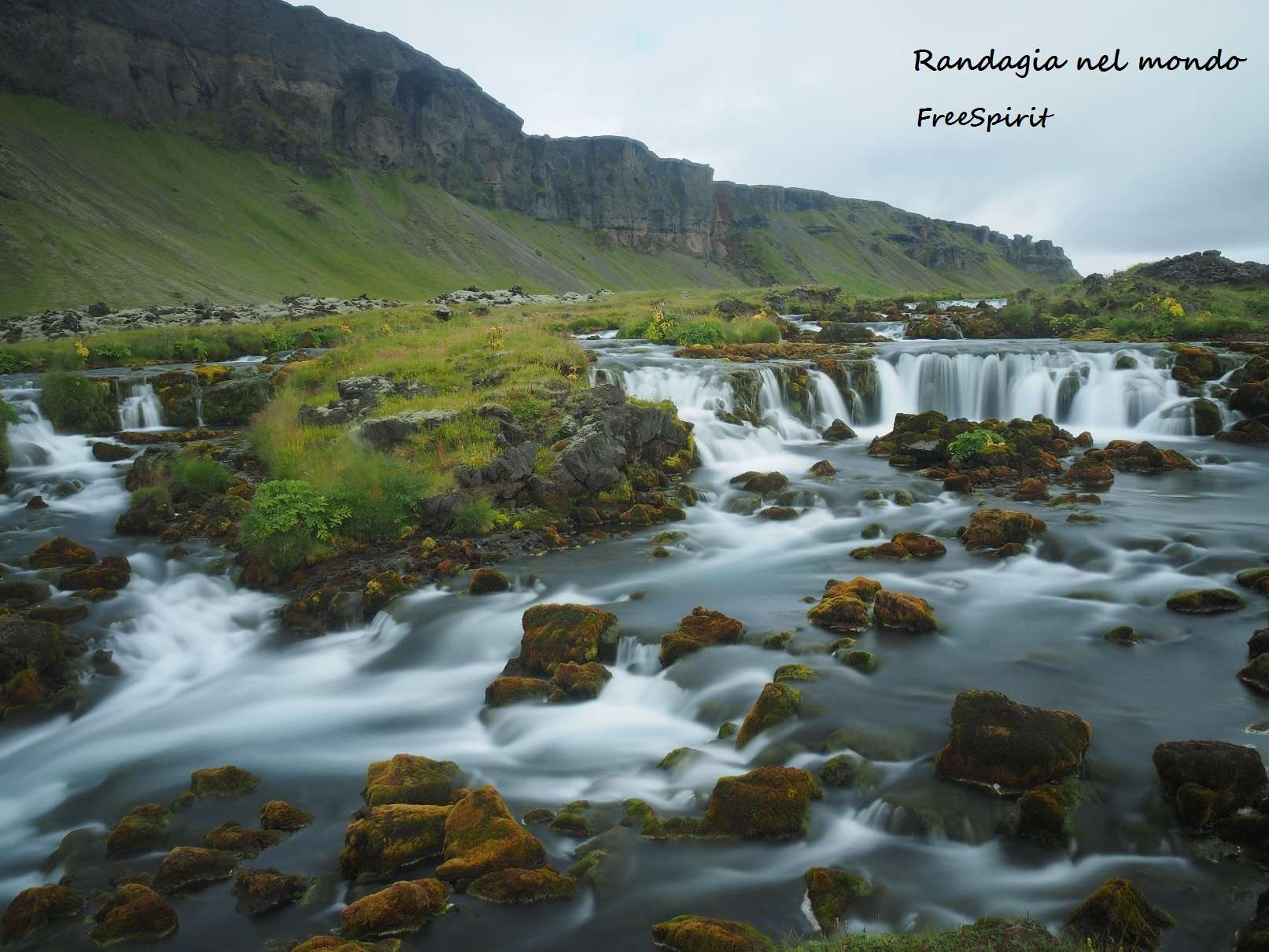

Subsequently, it’s the turn of the Vatnajökull National Park, the largest European glacier and the fourth largest ice cap in the world, including a variety of alpine landscapes and volcanoes, whose activity creates a series of ice caves that can be visited every year, I think only in wintertime. The Vatnajökull forms a series of strips of ice, including Skaftafell and Jökulsárlón, and the annexed Skaftafell.
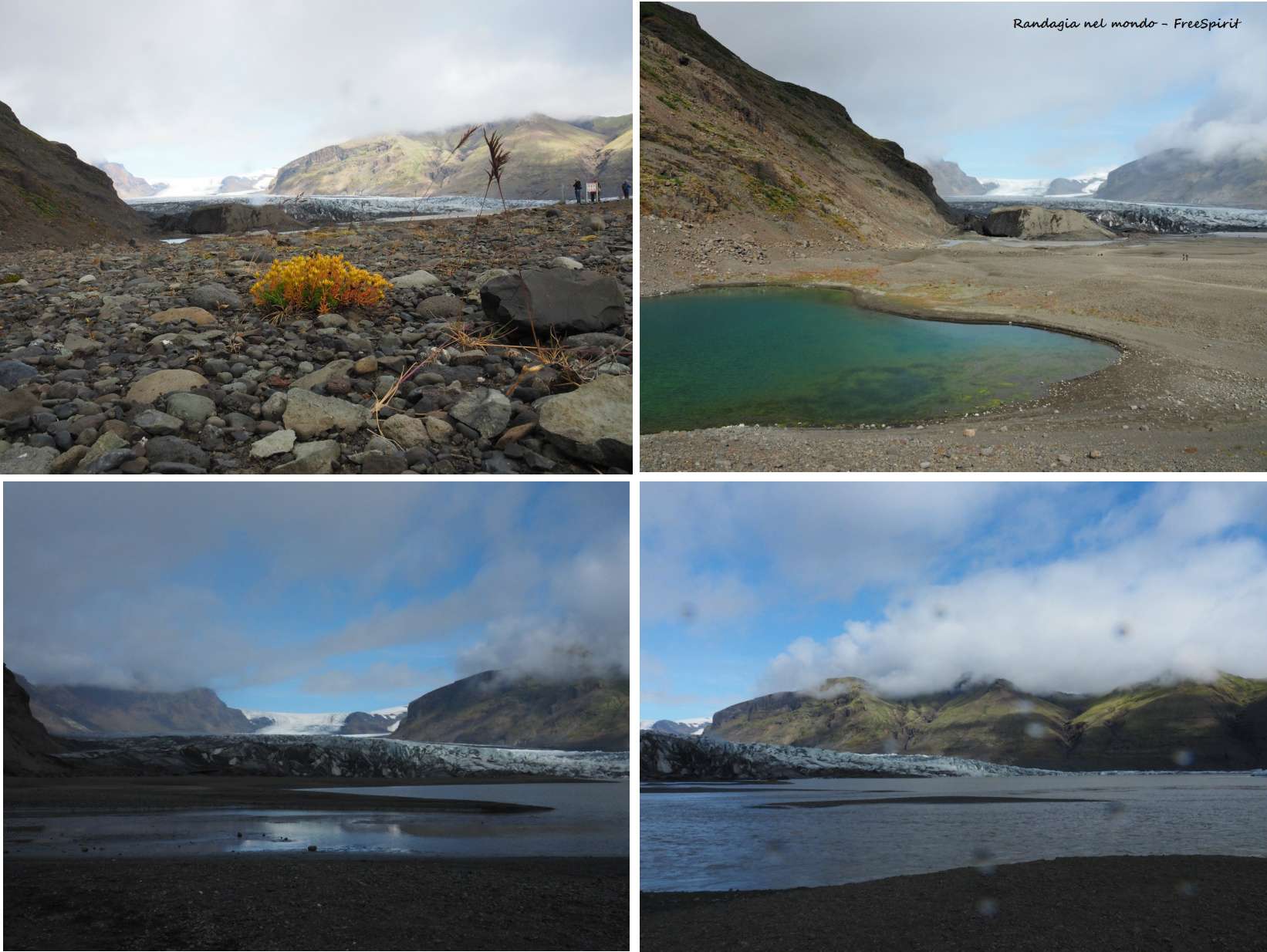
The stop at the belvedere which I believe is called Haoldukvisl

and then the Svartifoss waterfall, nestled between black basaltic rocks, and reachable after a walk uphill of about an hour.
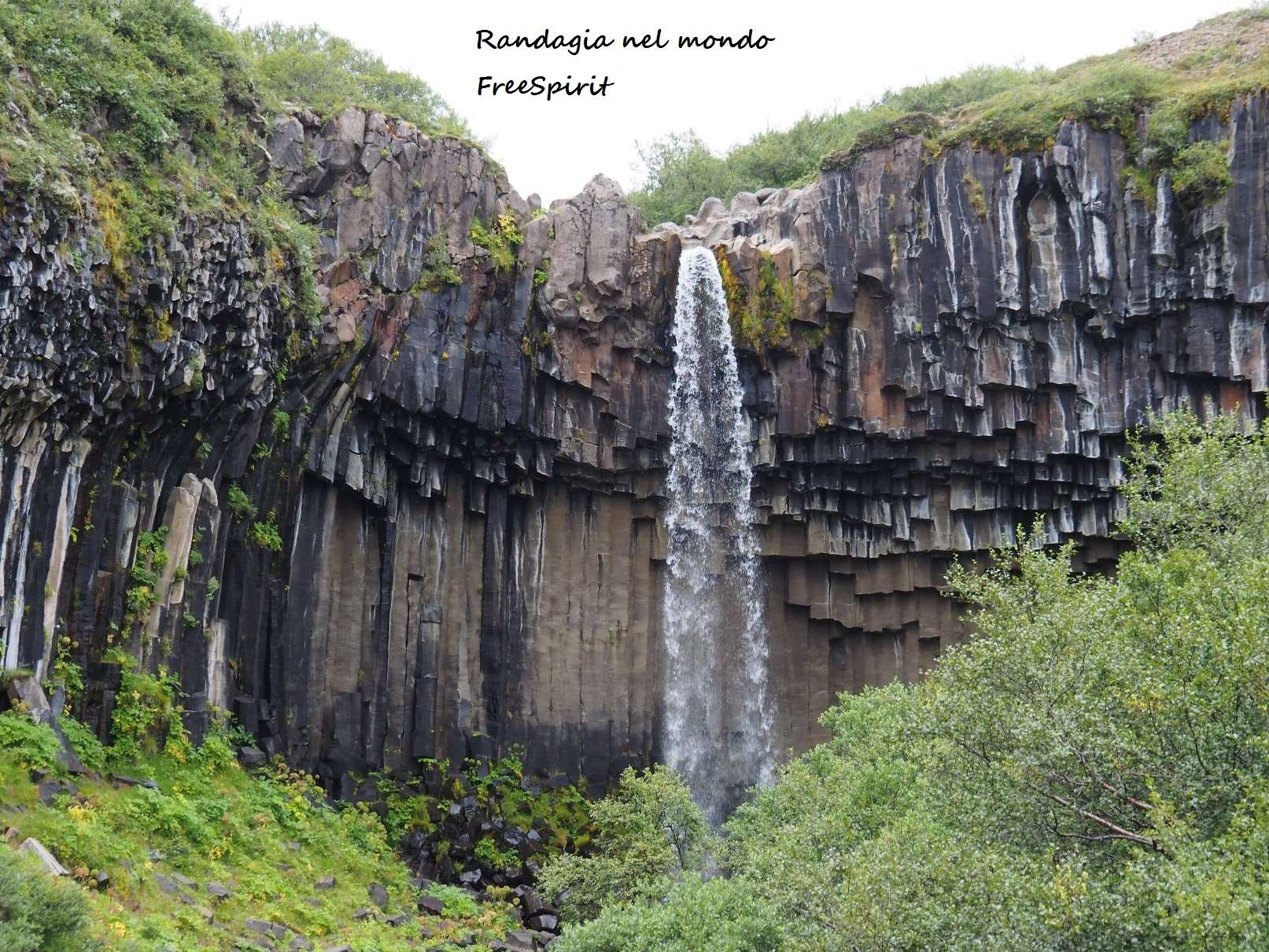 We sleep in Hof, at the Svinafell Campground which includes, in addition to the area dedicated to tents and campers, also accommodation in rooms in different buildings. I again have a single room (36 Eu) in sleeping bag accommodation , and this time they don’t even give me a pillow. The shared kitchen has a splendid view.
We sleep in Hof, at the Svinafell Campground which includes, in addition to the area dedicated to tents and campers, also accommodation in rooms in different buildings. I again have a single room (36 Eu) in sleeping bag accommodation , and this time they don’t even give me a pillow. The shared kitchen has a splendid view.
On the fourth day we reach the frozen lagoon of Jökulsárlón, also very touristy and crowded, however it is impressive to note that most tourists crowd in the immediate vicinity of the parking lot, so if you just decide to walk a little further, you will enjoy a fair solitude, and a lot of silence, disturbed only by the rubber dinghy tours, which I would personally abolish, since they do not add anything special to the panorama that can be enjoyed from the banks. Here the blocks of ice are of a blinding white, and slowly float towards the sea. Seals swim regardless of photographers’ flashes.

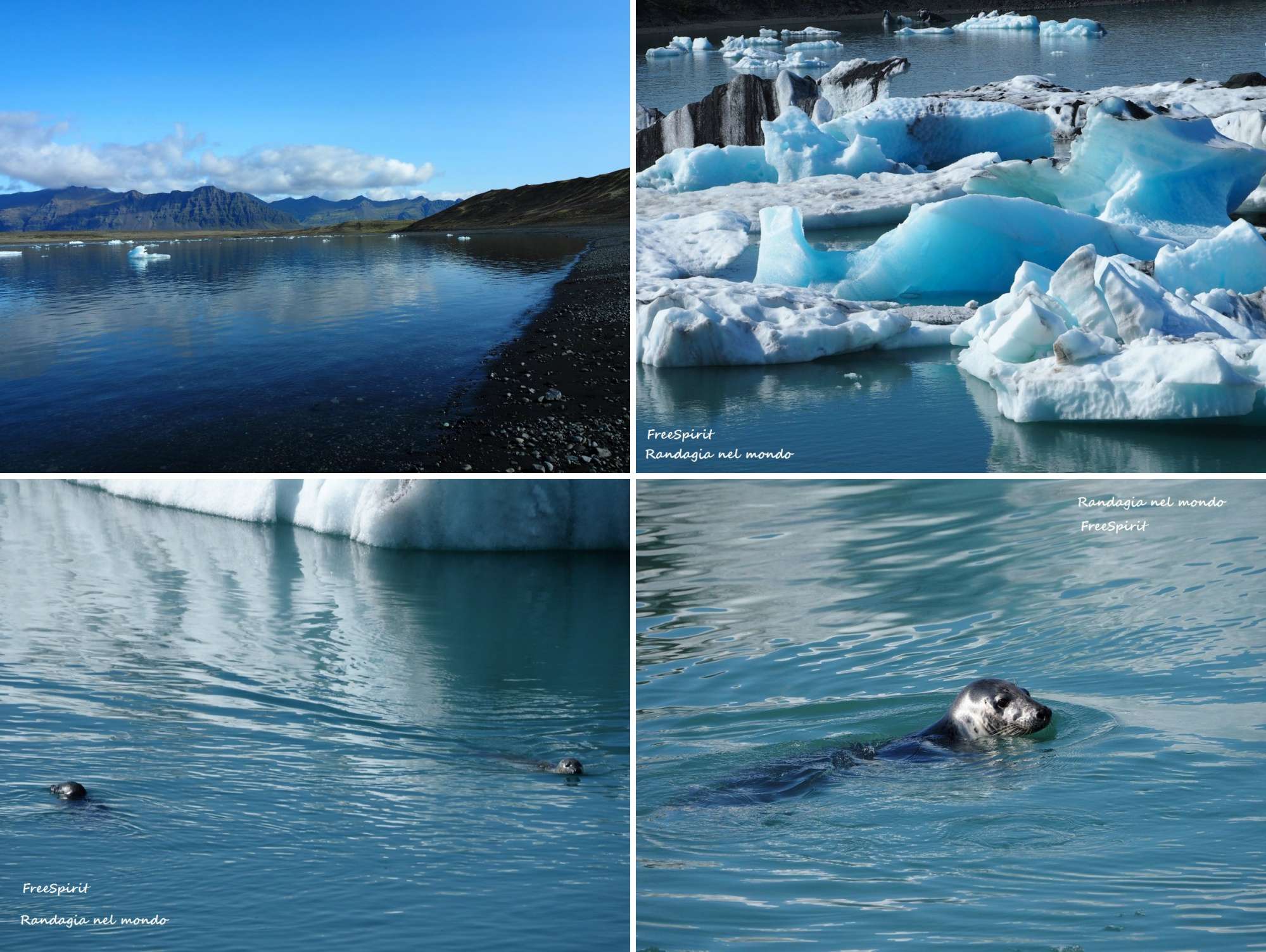
Diamond Beach, a large black sand beach, is at the mouth of the estuary. Crowds of people are here as well, to photograph the icebergs that strand aground on the shore.

After a packed lunch on the beach, we return a few kilometers back to visit Fjallsárlón. Therefore, our choice to go immediately to Jökulsárlón in the morning was well decided, because Fjallsárlón is much less visited, so there is no great crowds even around 2 pm, when instead Jökulsárlón is a mess.

Continuing further, we meet the pretty village of Þórbergssetur, with its Thórbergur Center, a curiously book-shaped building.
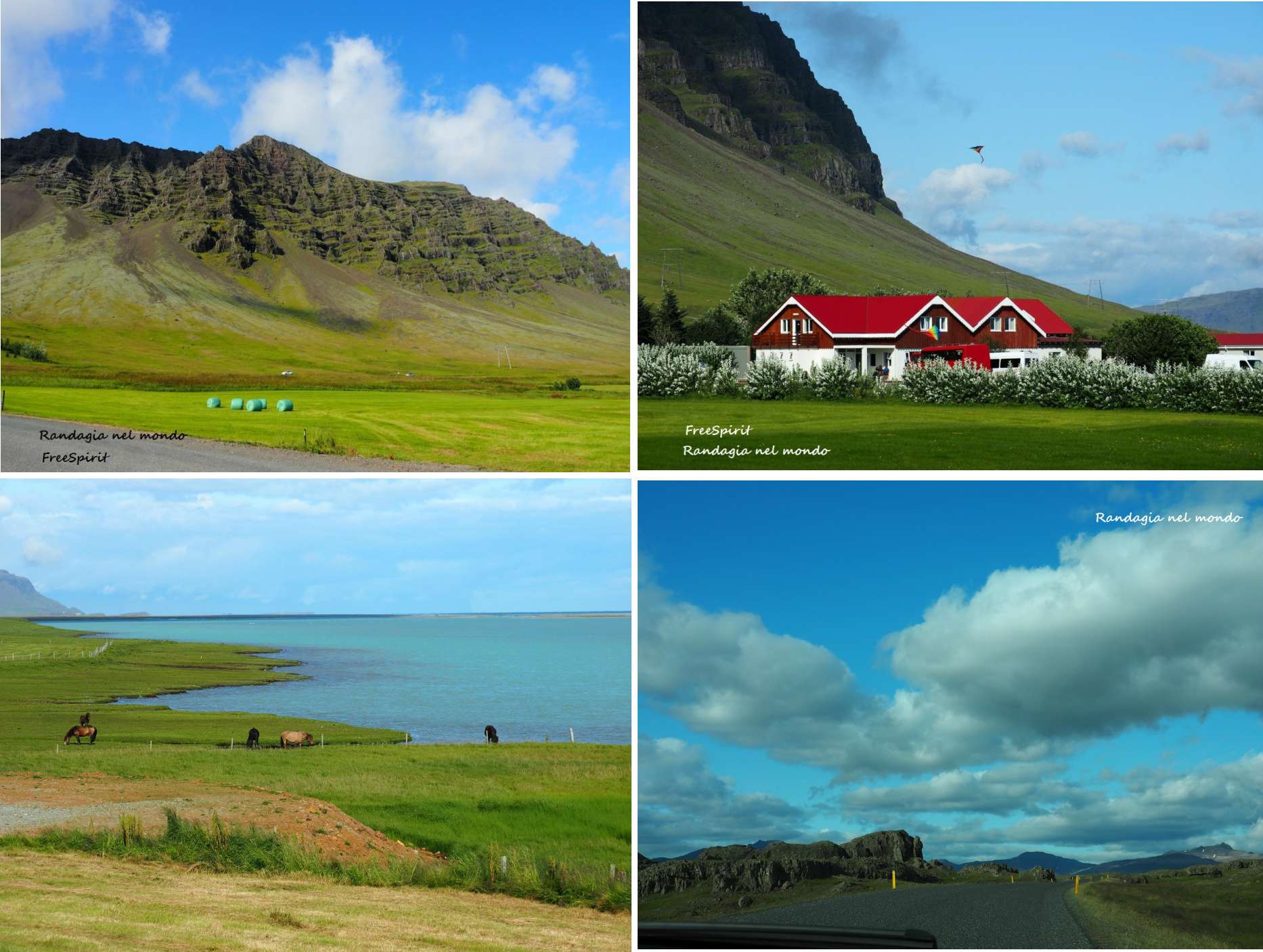
We land in Höfn rather early. The hostel is terrific. This time we have booked a double room, through Booking (171 Eu). The bathrooms are ultra-modern and clean, the kitchen is equipped with professional tools.
Our fifth day begins at Stokksnes lagoon, which reflects the Vestrahorn massif. Technically this area is still part of the Vatnajökull.
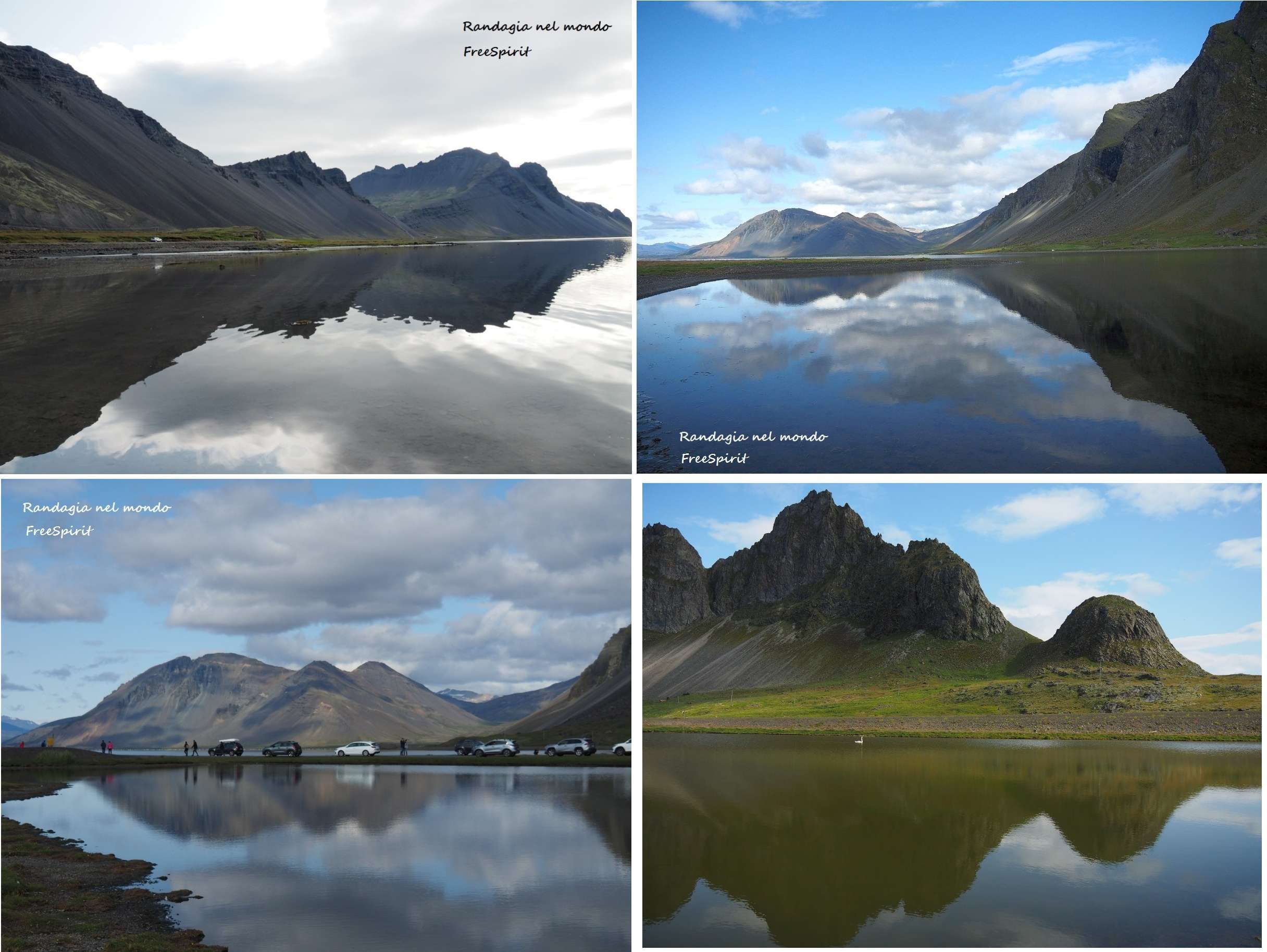
Later we reach the village of Djúpivogur, and its curious exhibition of egg-shaped sculptures “Eggin í Gleðivík”. A series of circular walks branch off from the village, with a beautiful view of the fjord and the promontories. The weather is decent until 2 pm.

We return from our excursion and have lunch in the car in the parking lot of the local supermarket (outside the wind has risen and it is cold to eat sitting on the benches which have, by the way, a splendid view). We reach Egilsstaðir under a rain which is not very thick but still annoying, accompanied by a mist that precludes us from seeing the majestic landscapes of the eastern fjords. I leave Cristina at the hostel in the city (I accompany her inside and meanwhile I take a look, it’s very nice and modern), and I head, not without difficulty, because the address indicated by Booking is not correct, to my accommodation, which is Mjóanes Accommodation, a beautiful farm a few km from Egilsstaðir. Rooms (45 Eu my single room, booked through Booking) and bathrooms are delightfully furnished and decorated. Our host, I believe the name is Elsa, is very kind and helpful. She updates me on the worsening weather conditions, and provides valuable information on how to reach the next day’s destination.
